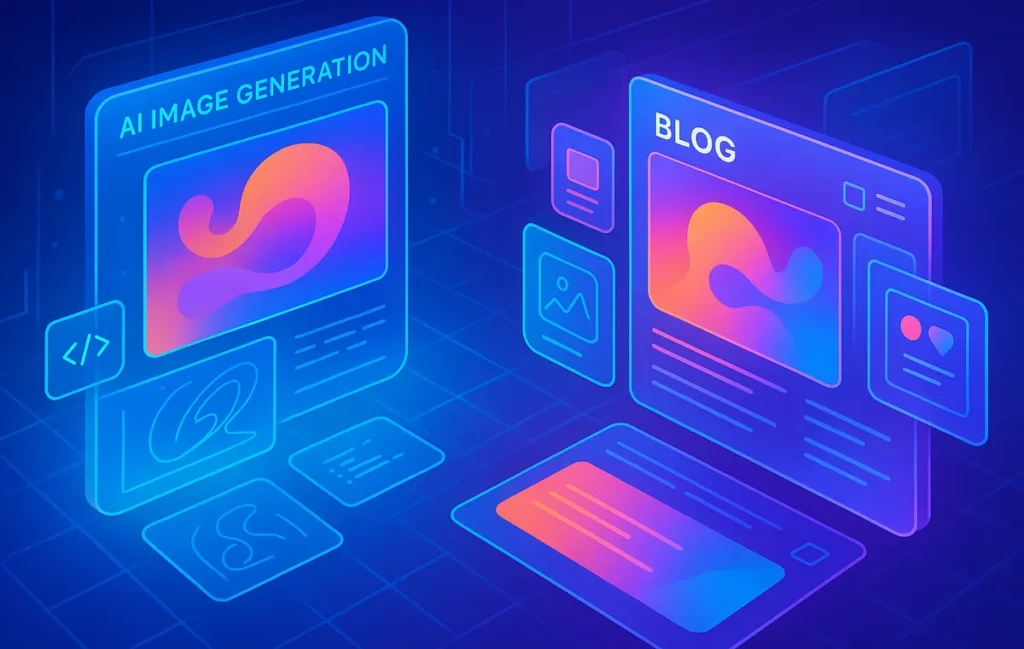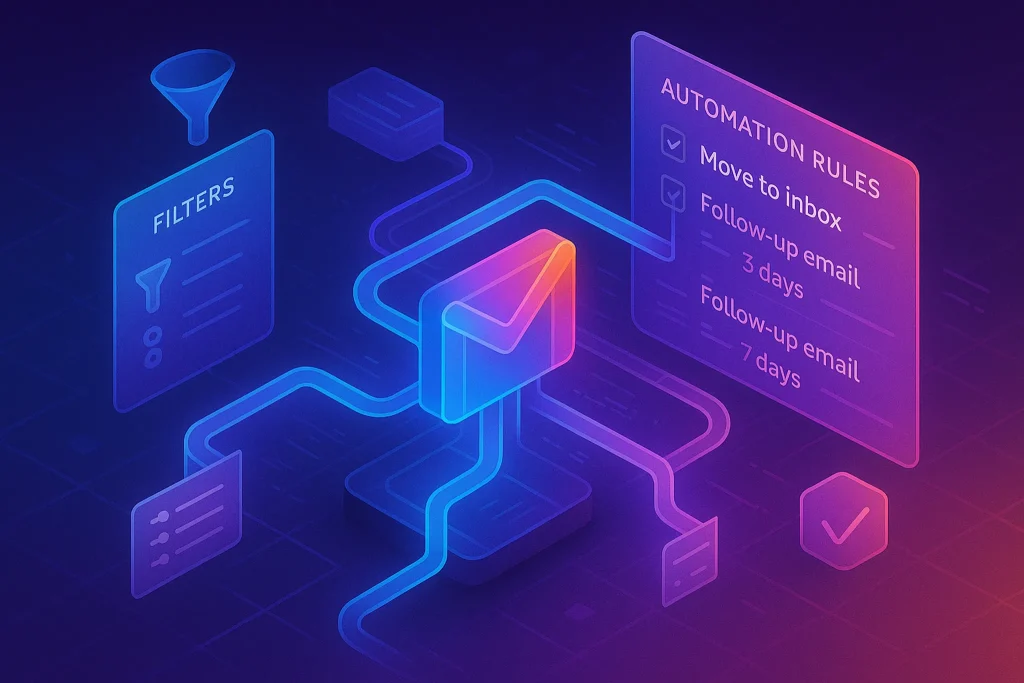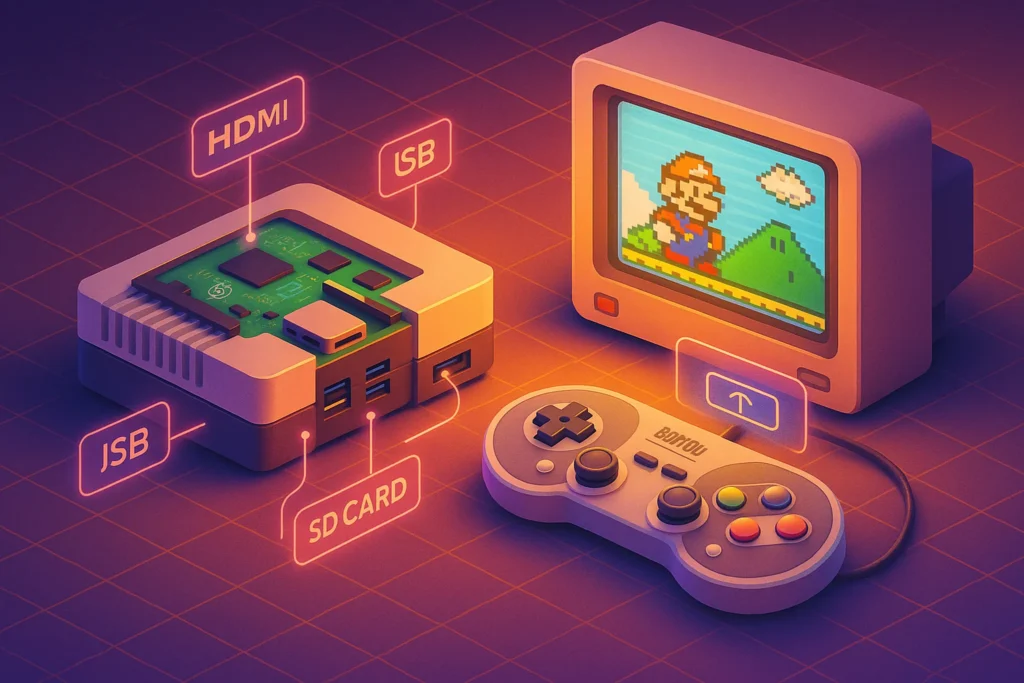🎨 Why AI Art Matters for Content Creators in 2025
Visuals aren’t optional anymore—they’re the currency of attention. Whether you’re running a niche blog, posting daily TikToks, or building a YouTube channel, standout images decide whether your content stops the scroll. In 2025, AI art tools are not only accessible but smart enough to adapt to your style.
For creators on tight budgets, AI art is the ultimate creative multiplier. Instead of paying for stock photos or waiting on freelance designers, you can generate custom thumbnails, illustrations, or infographics in minutes. Tools like How to Create AI Art with Midjourney and Adobe Firefly Review show how quickly this technology is evolving.
💡 Nerd Tip: Don’t think of AI art as “cheap design.” Think of it as a fast sketch artist you control with your words.
🧩 Step 1: Define Your Creative Goal
The biggest mistake creators make with AI art is jumping straight into prompts without clarity. Before opening Midjourney, Firefly, or DALL·E 3, define what you actually need.
Ask: Is this image for a blog header, a social media carousel, or a YouTube thumbnail? Each format has different demands. A thumbnail needs bold text space and exaggerated expressions. A blog illustration requires subtle detail. A social post may lean on minimalism.
As we noted in AI Content Idea Generators for Niche Bloggers, clarity at the start amplifies creativity later.
💡 Nerd Tip: Write one line describing the purpose of the image before drafting a prompt. Example: “A blog header that feels futuristic and professional about AI marketing.”
🖊️ Step 2: Craft Strong Prompts
AI art lives and dies by the prompt. In 2025, prompt engineering is less about magic words and more about clarity + detail. A vague prompt like “make me an AI robot” leads to generic results. But “a futuristic AI assistant in minimalist line art style, vibrant pastel background, optimized for YouTube thumbnail” tells the AI exactly what to deliver.
Creators now use prompt frameworks similar to copywriting formulas: [Subject] + [Style] + [Mood] + [Format] + [Use Case].
For example, a creator building an infographic could write: “Flat design infographic with bold icons, high contrast, professional color palette, sized for LinkedIn carousel.”
💡 Nerd Tip: Save your best-performing prompts in a personal library. Re-using refined prompts is how pros maintain consistency across platforms.
🖼️ Step 3: Choose the Right AI Art Tool
In 2025, the main contenders each bring strengths:
-
Midjourney — unmatched for artistic depth, surreal visuals, and stylistic control. Perfect for standout thumbnails or blog hero images.
-
Adobe Firefly — excellent for brand-safe assets, text-to-image with polished typography, and integration into Adobe’s ecosystem.
-
DALL·E 3 — intuitive and strong for literal, prompt-accurate outputs. Great for creators who want speed without fine-tuning.
Comparisons like Midjourney vs DALL·E 3 for AI Art Generation break down these strengths. The key is matching tool to purpose: Firefly for brand polish, Midjourney for originality, DALL·E for speed.
💡 Nerd Tip: Don’t chase one “perfect” tool. Mix and match depending on the project.
🖌️ Step 4: Refine and Edit Outputs
AI images rarely come out perfect. Smart creators treat the first result as a draft. Use built-in editing features like inpainting (replacing parts of an image) or Photoshop-style edits in Firefly to tweak details.
For thumbnails, you may want to brighten colors and increase contrast. For blog headers, you might erase distracting elements. For social carousels, you’ll need to resize images for multiple platforms.
As discussed in Best AI Writer Tools for Digital Marketers, polish is what separates amateurs from pros. The difference between an “AI-looking” graphic and a professional asset often lies in five minutes of editing.
💡 Nerd Tip: Always test your visuals in context. A thumbnail that looks stunning in isolation may flop when shrunk to YouTube preview size.
🚀 Step 5: Deploy Across Content Channels
Once refined, deploy your AI art strategically. Don’t just use one image once—repurpose it. A blog illustration can double as a LinkedIn post visual. A YouTube thumbnail design can be stripped of text and recycled as an Instagram Reel cover.
This cross-channel reuse is what makes AI art a true multiplier. As explored in AI Content Idea Generators for Niche Bloggers, creators who systematize visuals grow faster with less effort.
💡 Nerd Tip: Create a shared asset library. Even as a solo creator, saving all your AI outputs in organized folders makes scaling content easier.
⚡ Ready to Build Smarter Visual Workflows?
Experiment with AI art tools like Midjourney, Adobe Firefly, and DALL·E 3. Create custom thumbnails, blog graphics, and social visuals without design bottlenecks.
🗓️ 30-Day AI Art Creation Plan (Roadmap)
Jumping into AI art can feel overwhelming. A structured 30-day plan helps creators build confidence and consistency without burnout.
-
Week 1: Experiment and Play
Pick one tool—Midjourney, Firefly, or DALL·E 3—and simply explore. Generate 10–15 images across different styles. This is your sandbox week. Don’t focus on perfection—just discover what’s possible. -
Week 2: Create for Social Media
Start applying AI art directly to posts. Generate backgrounds for quotes, stylized covers for Instagram Reels, or bold illustrations for Twitter/X threads. Share them and track engagement compared to stock images. -
Week 3: Develop Brand Consistency
Refine prompts to match your color palette, fonts, and overall vibe. For example, if your brand leans minimal, adjust prompts to emphasize flat design and soft colors. Build a personal prompt library that mirrors your identity. -
Week 4: Complete an End-to-End Project
Produce one full package: a blog header, YouTube thumbnail, and social carousel—all using AI art. By the end, you’ll have a mini portfolio and the workflow confidence to scale.
💡 Nerd Tip: Don’t treat prompts as random one-offs. Document your best formulas—they’ll save hours later.
⚠️ Common Mistakes Creators Make with AI Art
AI art is powerful, but common missteps can undermine quality:
One frequent mistake is overusing generic prompts. Vague inputs like “beautiful background” produce bland results. Without specificity in mood, style, and purpose, outputs look like everyone else’s.
Another mistake is inconsistent branding. Creators often jump between neon cyberpunk one day and vintage pastel the next. While variety is fun, it confuses audiences and weakens brand identity.
Finally, ignoring context testing is a trap. An image that looks stunning full-screen may clutter a thumbnail or feel unreadable in a social feed. Always preview designs at their final size before publishing.
💡 Nerd Tip: Add a “use case” to every prompt (e.g., for YouTube thumbnail, for blog header). It helps tools optimize proportions and clarity.
📌 Mini Case Study: Creator ROI with AI Art
Jake, a mid-tier YouTuber in the productivity niche, switched from stock photos to Midjourney thumbnails in early 2025. Instead of bland, generic stock images, he began generating bold AI art with exaggerated emotions and vibrant colors tailored to his titles.
Within six weeks, his average click-through rate (CTR) jumped from 4.8% to 6.1%—a 27% lift. On one video, he tweeted: “The thumbnail alone carried this video to 100k views. I’ve never had that happen before.”
The lesson is clear: AI art isn’t just a cost-saving measure. It can directly increase engagement and revenue by aligning visuals more closely with audience psychology.
💡 Nerd Tip: Measure success with metrics like CTR, not just aesthetics. The prettiest image isn’t always the most effective.
🔮 The Future of AI Art (2026 and Beyond)
AI art in 2025 already feels advanced, but the next wave will push boundaries further. Expect text-to-video integration, where you type a prompt and instantly receive a 5-second animated clip for TikTok or Reels. This will collapse the gap between static and motion design.
Another emerging trend is 3D asset generation. Instead of creating 2D thumbnails, creators may soon generate fully manipulatable 3D models—perfect for immersive content or even metaverse branding.
Integration will also tighten. Imagine drafting a blog post in WordPress and clicking “Generate Header Image” without leaving your CMS, powered by Firefly or Midjourney APIs. Content pipelines will become frictionless.
💡 Nerd Tip: Watch for tools that experiment with motion and 3D. Early adopters will stand out as platforms reward new formats.
📊 Quick Comparison: Midjourney vs Firefly vs DALL·E 3
| Tool | Best Use Case | Strengths | Limitations |
|---|---|---|---|
| Midjourney | YouTube thumbnails, blog hero images | Artistic depth, unique styles | Steeper learning curve |
| Adobe Firefly | Brand-safe visuals, polished marketing assets | Typography integration, commercial safety | Fewer surreal/artistic options |
| DALL·E 3 | Quick social posts, literal prompt execution | Speed, accuracy to text | Less stylistic range |
This simple breakdown helps creators match tool to workflow instead of getting stuck chasing “the best” overall option.
💡 Nerd Tip: Rotate tools based on project type. Use Midjourney for standout art, Firefly for branding, and DALL·E for speed.
📬 Want More AI Design Playbooks?
Join our newsletter for practical guides on AI tools, design workflows, and content creation hacks. Perfect for bloggers, creators, and marketers.
🔐 100% privacy. Just actionable insights, curated by NerdChips.
🧠 Nerd Verdict
AI art in 2025 is not about replacing designers—it’s about empowering creators. The step-by-step process—defining goals, crafting prompts, choosing the right tool, refining, and deploying—turns anyone into a capable visual storyteller.
At NerdChips, we’ve seen creators who embrace AI art publish faster, engage audiences deeper, and even boost ROI by 15% through higher click-through on visual content. The bottom line: AI art is no longer experimental—it’s practical, powerful, and creator-first.
❓ FAQ: Nerds Ask, We Answer
💬 Would You Bite?
If you could replace all your stock images with custom AI art in 2025, would you trust the workflow—or do you still prefer traditional design methods?
Crafted by NerdChips for creators who want to turn words into visuals and scale content smarter in 2025.



